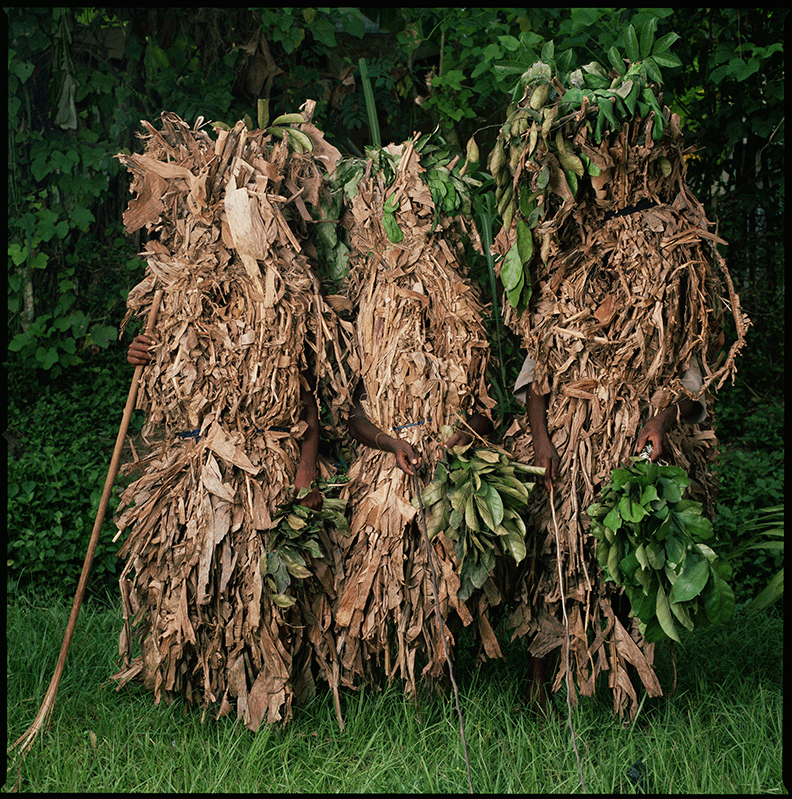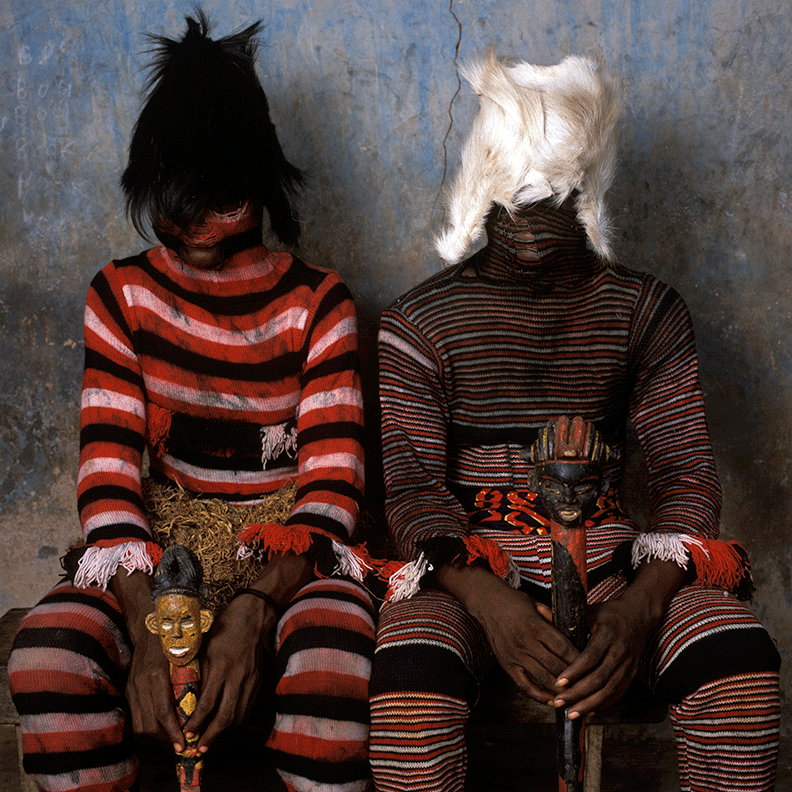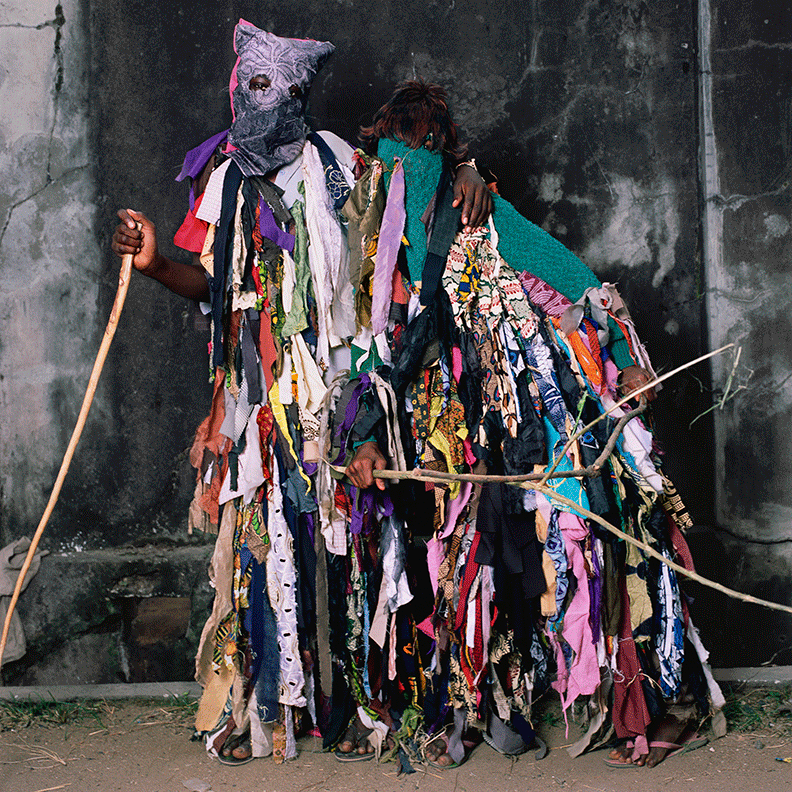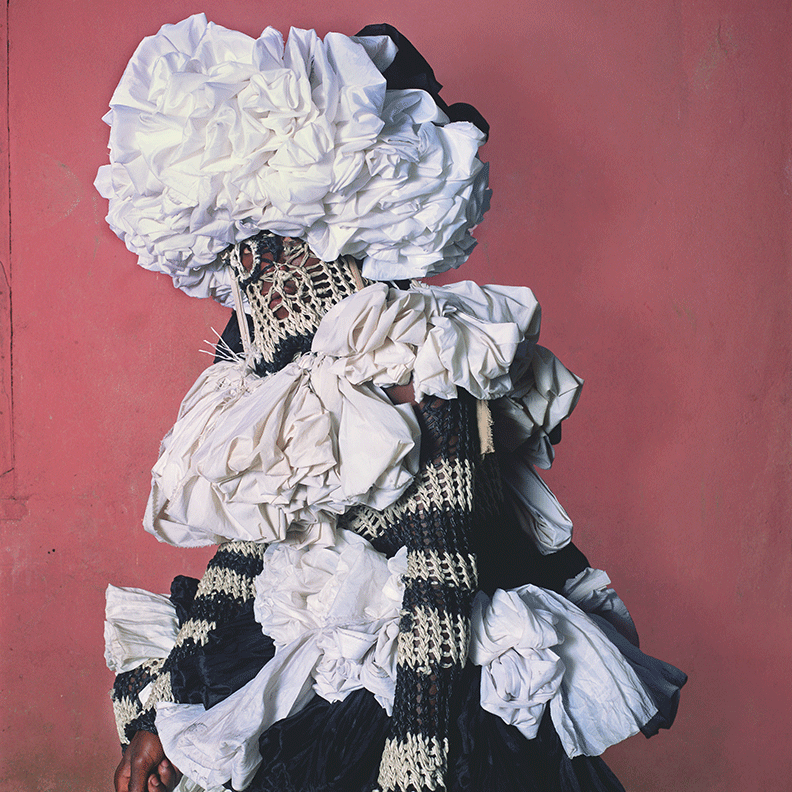« Features
Phyllis Galembo: Maske
By Denise Colson
“Phyllis Galembo: Maske” originally opened on January 28 at the Boca Raton Museum of Art. Shortly after the opening, the Museum temporarily closed due to the COVID-19 pandemic. As a new wave of mask-making creativity takes hold, the Museum’s education team has created new digital pathways for the public to enjoy online. These include mask-related online activities for families who are still at home, and video gallery tours for all ages. The Museum has also extended the exhibition for an additional four months, until September 20, to allow people time to experience these works in person after safe guidelines for re-opening.
“For many people all over the world now, creating and wearing masks feels like a way they can reclaim some personal power,” said Phyllis Galembo. “Protective face masks aren’t just medical anymore, we can see on social media how they are becoming a part of fashion, of our cultural landscape. Ways that people can convey messages and reflect their own personality.”
The Museum’s YouTube Channel, Instagram and Facebook feature new digital resources related to the exhibition and masks (#BocaMuseumatHome). “Viewers can see in this exhibition how the tradition of masquerading has always been universal and timeless,” said Executive Director Irvin Lippman. “The powerful photographs by Galembo selected for this exhibition reveal the meticulous detail and creative imagination of mask-making.”
Galembo’s large scale photographs capture the transformative power of the African masquerade. Her striking photographic series of contemporary mask rituals has drawn national and international critical acclaim. These images are nearly life-size and explore spiritual realms of these masquerade cultures with brilliant, mesmerizing colors.
For more than 30 years, she has travelled around the world to photograph participants in contemporary mask-making and masquerade events that range from traditional religious ceremonies to secular celebrations.
Galembo’s portraits are celebrated by the world’s leading fine art photography editors for their stunning resonance. Through her lens, the viewer gains special access to these rarely seen other-worlds as she captures the raw and sometimes frightening aspects of masks and ceremonial garb. She has made over twenty trips to sites of ritual masquerades, capturing cultural performances with a subterranean edge. The masking seen through her photographs is a complex, mysterious, and profound tradition in which the participants transcend the physical world and enter the spiritual realm.
In her vibrant images, Galembo exposes an ornate code: artistic, theatrical, social, and religious symbolism and commentary. Her photographs depict the physical character, costumes, and rituals of African religious practices and their diasporic manifestations in the Caribbean and Mexico.
The costumes in Galembo’s photographs are worn in several types of modern-day rituals. They are created to summon ancestral spirits and deities during a range of events, including agricultural hardships, land disputes, rites of passage, funerals, harvests, moments of gratitude and celebration.
The masks and costumes in these photographs are made from a wide variety of surprising materials-leaves, grass, patterned fabrics, burlap sacks, full-bodied crocheted yarns, colored raffia, quills, shells, and even lizard excrement. The modern world finds its way into these masks with the usage of plastic bags, cardboard, and found objects.
Galembo’s large-scale portraits in this exhibition capture the mask-oriented cultural traditions of Nigeria, Benin, Ghana, and Sierra Leone. Her photographs are shot as portraits rather than during the act of ritual. She was allowed to photograph her subjects at the very moment right before their rituals and festivities commence. She has never seen her subjects out of costume.
Despite secularization and fading traditions, masquerading in Africa is abundant, robust, and far from disappearing. Most of the photographs in this exhibition reflect sacred rituals, the spiritual aspect of masquerading rather than secular celebrations. By donning garments, the masqueraders gain access to traditional knowledge, enabling them to relay critical messages to the community.
Attuned to a moment’s collision of past, present, and future, Phyllis Galembo is recognized for her ability to find the timeless elegance and dignity of her photographic subjects.
Using a direct, unaffected portrait style, she captures her subjects informally posed but often beautifully attired in traditional and ritualistic dress. She highlights the creativity of the individuals morphing into a fantastical representation of themselves. Galembo prefers her colors to be brightly saturated, enhancing the spiritual and transformative powers of these garments.
While still pronounced in their personal identity, the subject’s intentions are rooted in the larger dynamics of religious, political, and cultural affiliation. Establishing these connections is the artist’s hallmark.
Galembo was born 1952 in New York, where she continues to live and work. She graduated with a Master of Fine Arts from University of Wisconsin at Madison in 1977, and is a Professor Emeritus at Albany, State University of New York, since 1978.
Her photographs are included in numerous public and private collections, including: the Metropolitan Museum of Art; the New York Public Library; Oceania and the Americas, Photography Study Collection (New York); Philadelphia Museum of Art; Houston Museum of Art; International Center for Photography (New York); the British Art Museum; Yale University; Polaroid Corporation (Boston); and the Rockefeller Foundation, among many others.
Galembo’s work has been featured in Tar Magazine, Damn Magazine, Photograph, and Harpers. She has been profiled on CNN, NPR Radio and NBC Today.
Virtual tour at https://www.youtube.com/watch?v=C2Sy-l-SIPk&feature=youtu.be
“Phyllis Galembo: Maske” is on view through September 20, 2020. Boca Raton Museum of Art is located at 501 Plaza Real, Boca Raton, FL, 33432. | www.bocamuseum.org.
However, guanosine monophosphate is destroyed by another enzyme, phosphodiesterase-5, the blood vessels return to their normal size, blood leaves the penis, and the erection ends. seanamic.com cialis properien It is regardless to mention the increasing frequency of male impotence or erectile dysfunction (Ed) in men. seanamic.com levitra online pharmacy is taken only when needed. The effect tadalafil discount remains for 4 to 6hours. http://seanamic.com/order-3654 cialis generico in india The high prevalence of sexually transmitted diseases or STDs like syphilis, gonorrhea, AIDS, etc.























